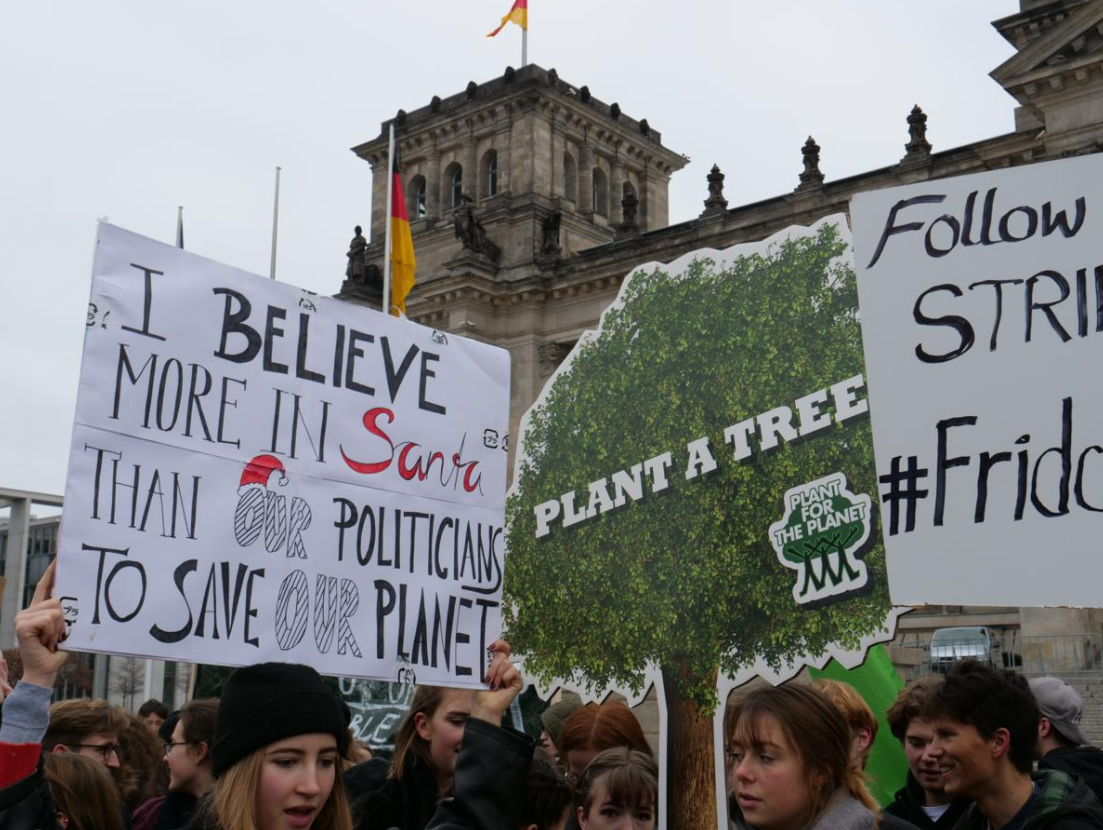The school strike for the climate (Swedish: Skolstrejk för klimatet), also known variously as Fridays for Future (FFF), Youth for Climate, Climate Strike or Youth Strike for Climate, is an international movement of school students who take time off from class on Fridays to participate in demonstrations to demand action from political leaders to take action to prevent climate change and for the fossil fuel industry to transition to renewable energy. Publicity and widespread organising began after Swedish schoolgirl Greta Thunberg staged a protest in August 2018 outside the Swedish Riksdag (parliament), holding a sign that read "Skolstrejk för klimatet" ("School strike for the climate"). A global strike on 15 March 2019 gathered more than one million strikers. Around 2200 strikes were organised in 125 countries. On 24 May 2019, the second global strike took place, in which 1600 events across 150 countries drew hundreds of thousands of protesters. The events were timed to coincide with the 2019 European Parliament election. The 2019 Global Week for Future was a series of 4500 strikes across over 150 countries, focused around Friday 20 September and Friday 27 September. Likely the largest climate strikes in world history, 20 September strikes gathered roughly 4 million protesters, many of them schoolchildren, including 1.4 million people on strike in Germany. On 27 September, an estimated 2 million people participated in demonstrations worldwide, including over 1 million protesters in Italy and several hundred thousand protesters in Canada.
- climate change
- climate
- schoolchildren
1. Climate Strike of November 2015
In late-November 2015, an independent group of students invited other students around the world to skip school on the first day of the 2015 United Nations Climate Change Conference in Paris. On 30 November, the first day of the conference, a "Climate strike" was organised in over 100 countries; over 50000 people participated.[1] The movement focused on three demands: 100% clean energy; keeping fossil fuels in the ground, and helping climate refugees.[2]
2. Greta Thunberg, 2018
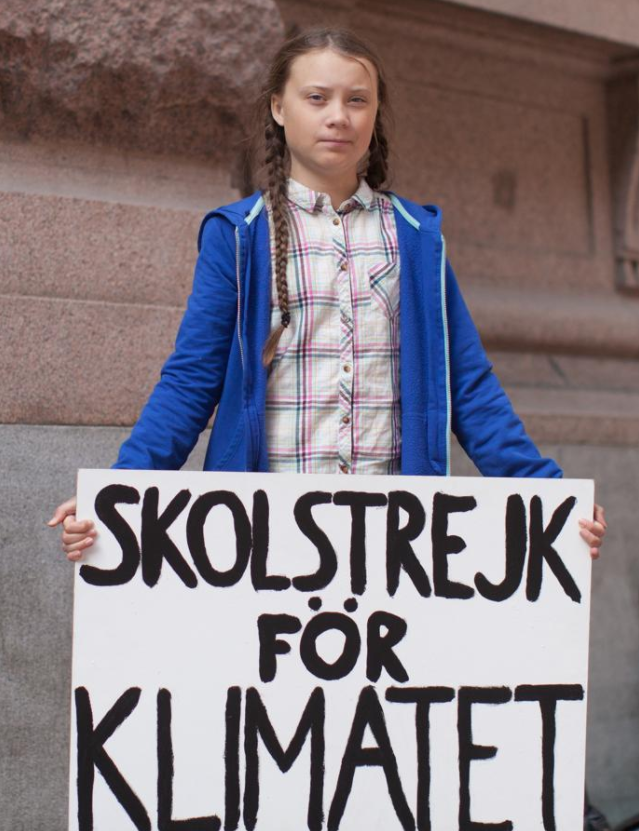

On 20 August 2018, the Swedish climate activist Greta Thunberg,[3] then in the ninth grade, decided to not attend school until the 2018 Sweden general election on 9 September after heat waves and wildfires in Sweden.[4] She has said she was inspired by the teen activists at Marjory Stoneman Douglas High School in Parkland, Florida, who had organised the March for Our Lives.[5][6] Thunberg protested by sitting outside the Riksdag every day during school hours with a sign that read "Skolstrejk för klimatet" ("school strike for the climate").[7] Among her demands were that the Swedish government reduce carbon emissions per the Paris Agreement. On 7 September, just before the general elections, she announced that she would continue to strike every Friday until Sweden aligns with the Paris Agreement. She coined the slogan FridaysForFuture, which gained worldwide attention. She inspired school students across the globe to take part in student strikes.[8]
Thunberg travelled to New York City on a two-week journey by sailboat to continue calling attention to the work needed to address the climate crisis. She participated in school strikes being planned in the U.S on 20 September, and soon after she spoke at the UN Climate Summit on 23 September 2019, in New York City.[9]
3. Growing Movement, 2019


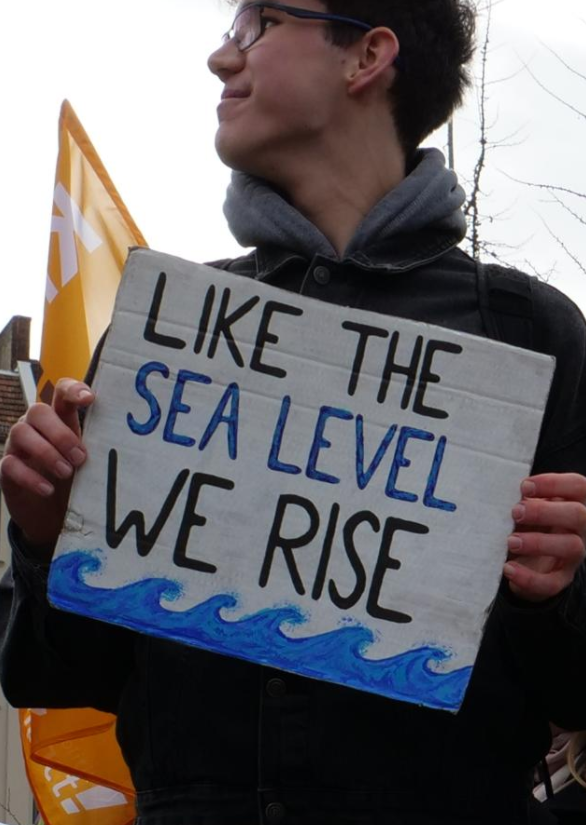


Strikes began to be organised around the world, inspired by Thunberg, starting in November 2018. In Australia, thousands of students began to strike on Fridays, ignoring Prime Minister Scott Morrison's call for "more learning in schools and less activism".[10] Galvanised by the COP24 Climate Change Conference in Katowice, Poland, strikes continued at least in 270 cities[8] in December in countries including Australia, Austria,[11] Belgium, Canada,[12] the Netherlands, Germany, Finland, Denmark, Japan, Switzerland,[13][14] the United Kingdom, and the United States.[8][15]
In 2019, strikes were organised again in the countries listed above and in other countries, among them Colombia, New Zealand, and Uganda.[16] Mass strikes took place on 17 and 18 January 2019, when at least 45000 students protested in Switzerland and Germany alone, against insufficient policies on global warming.[17][18][19] In several countries, including Germany and the UK, pupils demanded the change of laws to reduce the voting age to 16 so they could influence public elections in favour of the youth.[20][21]
In Germany, regional groups were organised, communicating autonomously within WhatsApp groups and spreading their messages using flyers and social media. By February 2019, more than 155 local groups were counted by the movement.[22]\
In United States, organizers coordinated on a state-by-state level and communicated autonomously within Slack groups and spreading their messages using flyers and social media. By February 2019, more than 134 groups were counted by the movement. The organizations Sunrise Movement, 350.org, OneMillionOfUs, Earth Uprising, Future Coalition, Earth Guardians, Zero Hour, and Extinction Rebellion helped to coordinate. [22]
The Belgian environment minister for Flanders, Joke Schauvliege, resigned on 5 February 2019 after falsely claiming the state security agency had evidence that the school strikes in Belgium were a "set‑up".[23]
In the United Kingdom, on 13 February 2019, following open letters in support of the socio-political movement Extinction Rebellion in 2018, 224 academics signed an open letter giving their "full support to the students" attending the School Strike for Climate action.[24][25] On Friday 15 February, more than 60 actions in towns and cities within the United Kingdom took place, with an estimated 15000 strikers taking part.[24][26][27]
Climate scientist Stefan Rahmstorf, Potsdam Institute for Climate Impact Research, addressed a Fridays for Future climate strike in Potsdam, Germany that same day.[28] On 21 February 2019, the President of the European Commission, Jean-Claude Juncker, stated his intent to spend hundreds of billions of euros on climate-change mitigation, amounting to a fourth of the EU budget. He announced this in a speech next to Greta Thunberg, and media credited the school-strike movement with provoking the announcement.[29]
On 5 March 2019, 700 German-speaking researchers signed a statement in support of the school strikes in that country.[30] Other researchers were invited to support the statement and it has been signed by over 26800 scientists from mainly Germany, Austria and Switzerland.[31][32]
On 9 May 2019, during a European Union summit in Sibiu, representatives of the movement from all over Europe met with several national leaders of European countries and handed them an open letter, which was signed by over 16000 European climate strikers and their sympathisants.[33][34][35]
3.1. Global Climate Strike for Future of 15 March 2019
On 15 March 2019, a series of school strikes urging adults to take responsibility and stop the climate change took place. More than a million people demonstrated in about 2200 events worldwide across 125 countries.[36][37][38][39]
On 1 March 2019, 150 students from the global coordination group of the youth-led climate strike (of 15 March), including Thunberg, issued an open letter in The Guardian , saying:[40]
We, the young, are deeply concerned about our future. […] We are the voiceless future of humanity. We will no longer accept this injustice. […] We finally need to treat the climate crisis as a crisis. It is the biggest threat in human history and we will not accept the world's decision-makers' inaction that threatens our entire civilisation. […] Climate change is already happening. People did die, are dying and will die because of it, but we can and will stop this madness. […] United we will rise until we see climate justice. We demand the world's decision-makers take responsibility and solve this crisis. You have failed us in the past. If you continue failing us in the future, we, the young people, will make change happen by ourselves. The youth of this world has started to move and we will not rest again.
In Scotland, city councils of Glasgow, Edinburgh, Highland and Fife gave permission for children to attend the strikes.[41] In Finland parental consent letters were sent to schools[42] and in the Finnish city of Turku the school board proclaimed that children had a constitutional right to take part in the strikes.[43]
On the morning of 15 March in a Guardian guest editorial, titled "Think we should be at school? Today's climate strike is the biggest lesson of all", school-climate-strikers Thunberg, Anna Taylor, Luisa Neubauer, Kyra Gantois, Anuna De Wever, Adélaïde Charlier, Holly Gillibrand and Alexandria Villaseñor, reiterated their reasons for striking.[44]
In Germany, more than 300000 pupils demonstrated in 230 cities with more than 25000 in Berlin alone.[45][46] In Italy more than 200000 students demonstrated (100000 in Milan according to the organisers). In Montreal more than 150000 attended; Stockholm 15000 to 20000, Melbourne 30000, Brussels 30000, and Munich 8000. Other cities included Paris, London, Washington, Reykjavík, Oslo, Helsinki, Copenhagen and Tokyo.[37] In Antarctica, at least seven scientists held a supportive rally at the Neumayer-Station III of Alfred Wegener Institute.[47][48]
In Christchurch, New Zealand, the strike was abandoned for safety reasons, after a gunman opened fire on two nearby mosques and killed 51 people.[49]
-
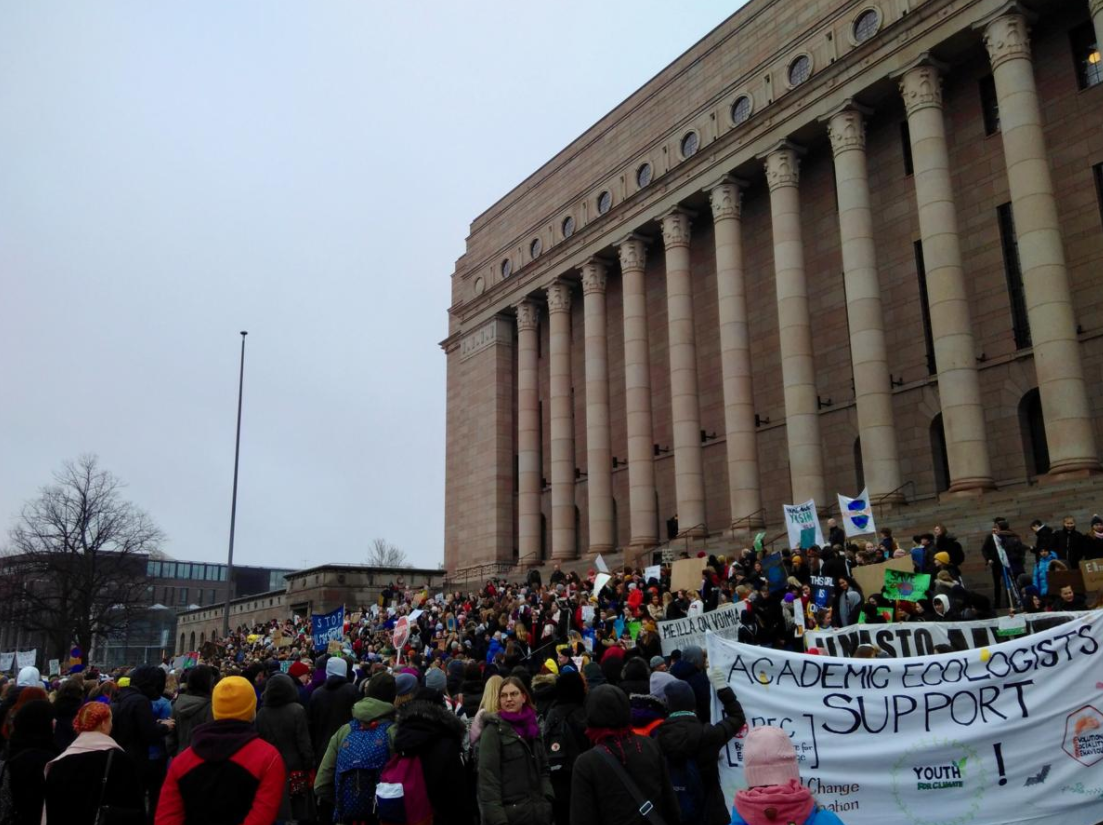
School Strike for Climate in front of the Parliament House, Helsinki, 15 March 2019. https://handwiki.org/wiki/index.php?curid=1565895
-
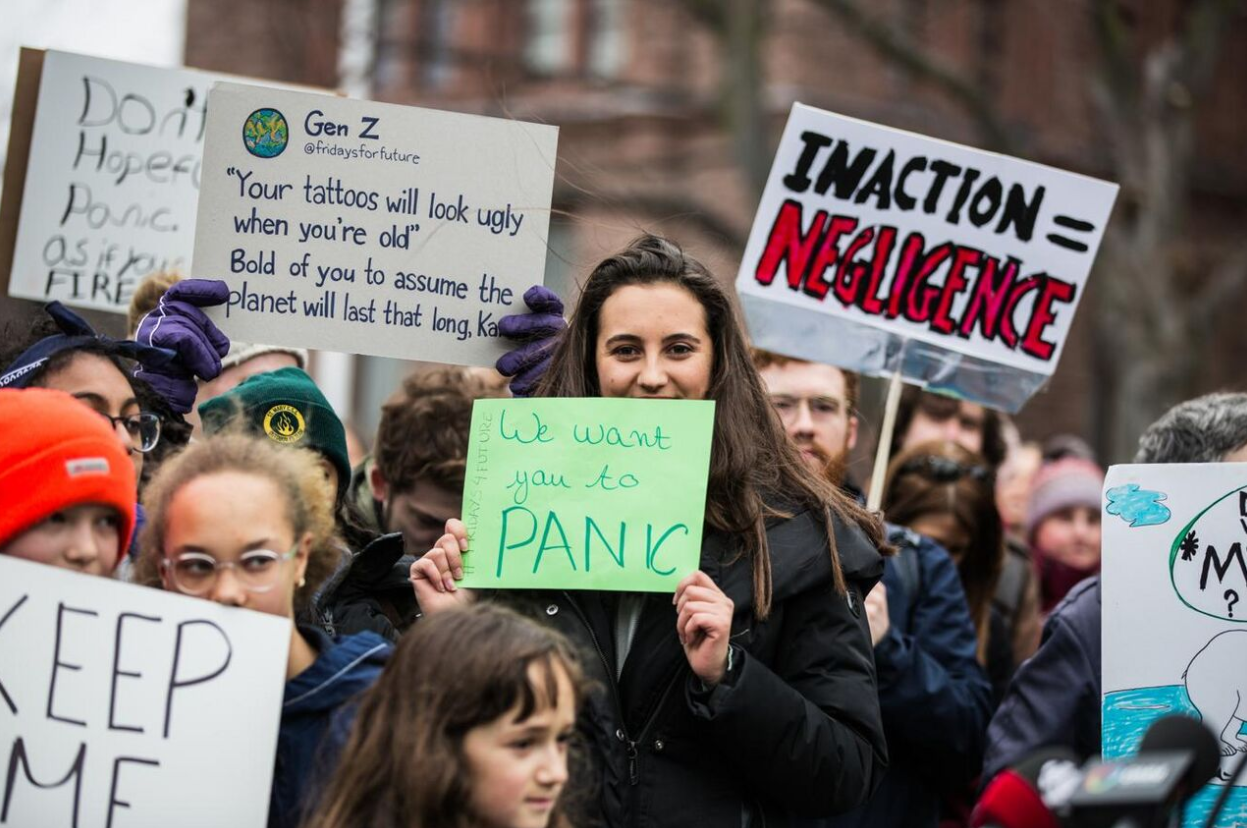
"Fridays for Future" 15 March Toronto. https://handwiki.org/wiki/index.php?curid=1164984
-
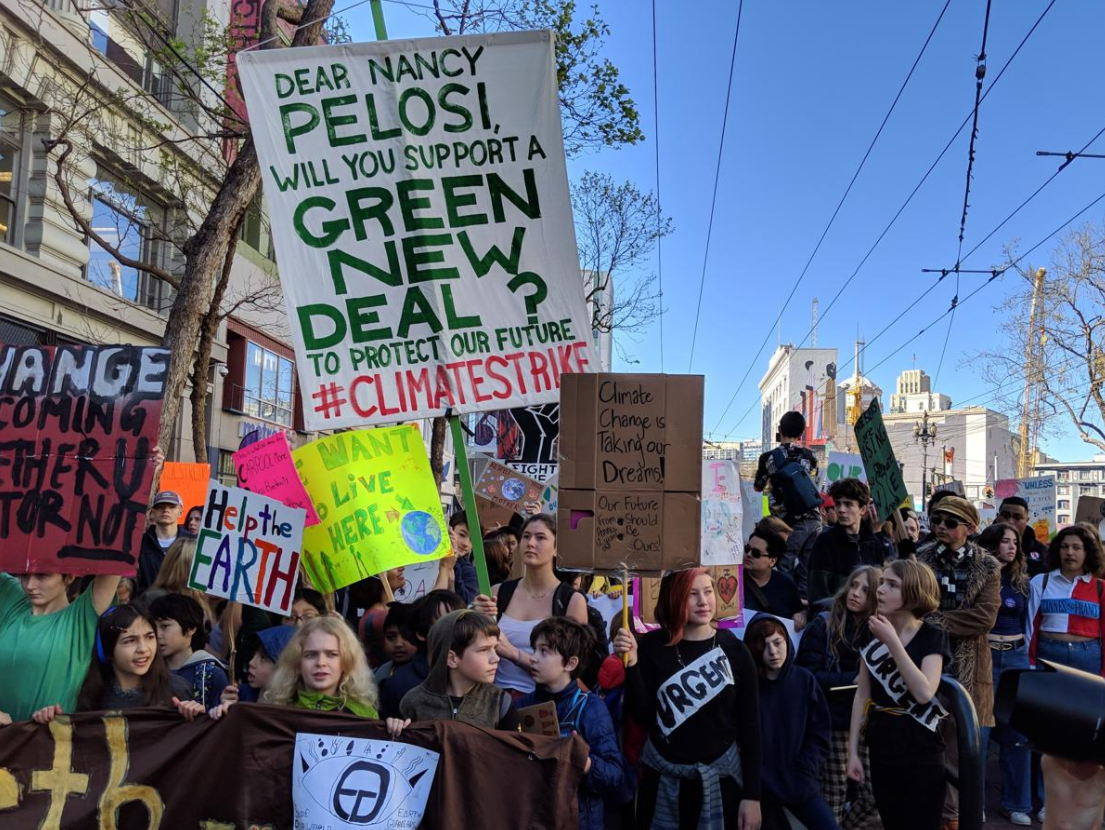
School strike in San Francisco on 15 March 2019. https://handwiki.org/wiki/index.php?curid=1607968
-
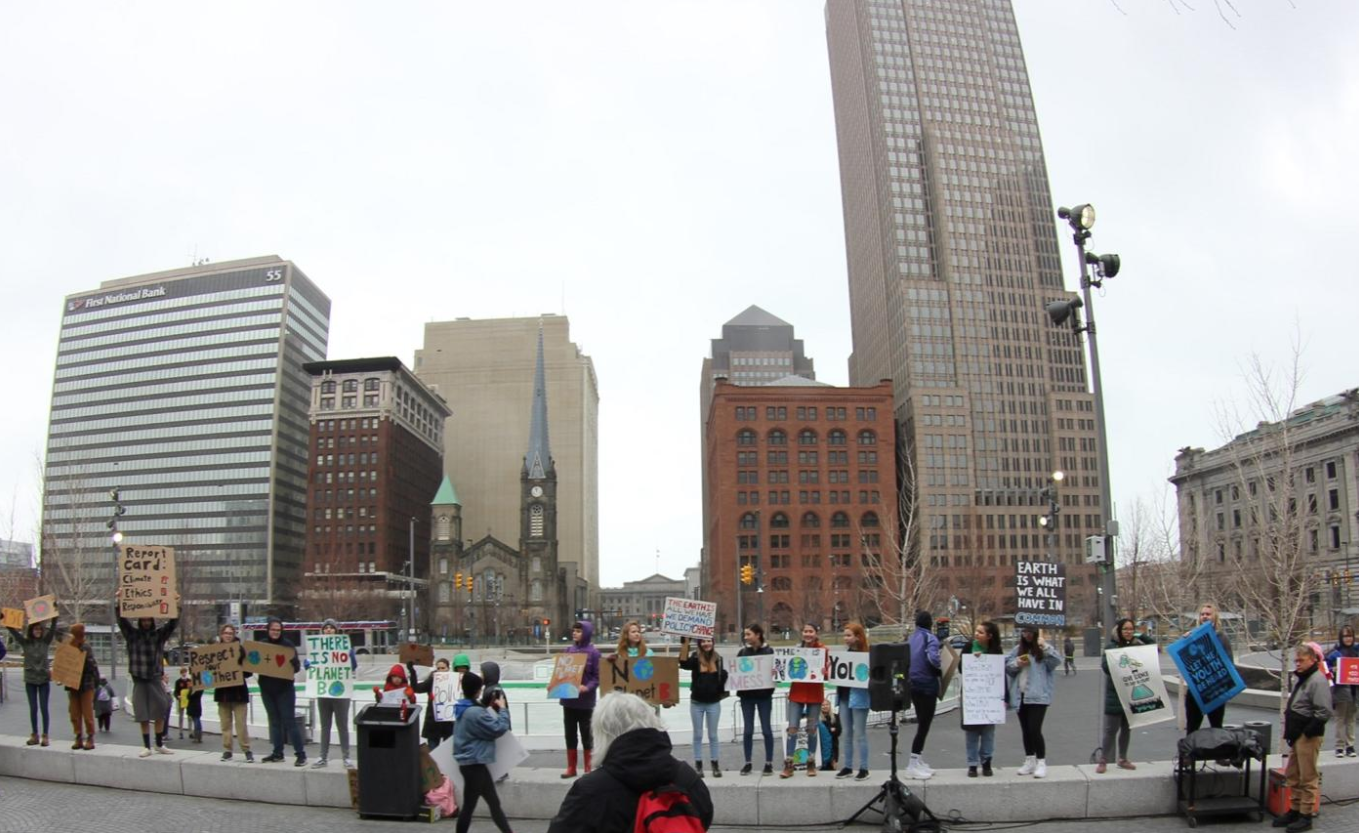
School strike in Cleveland on 15 March 2019. https://handwiki.org/wiki/index.php?curid=1363522
-
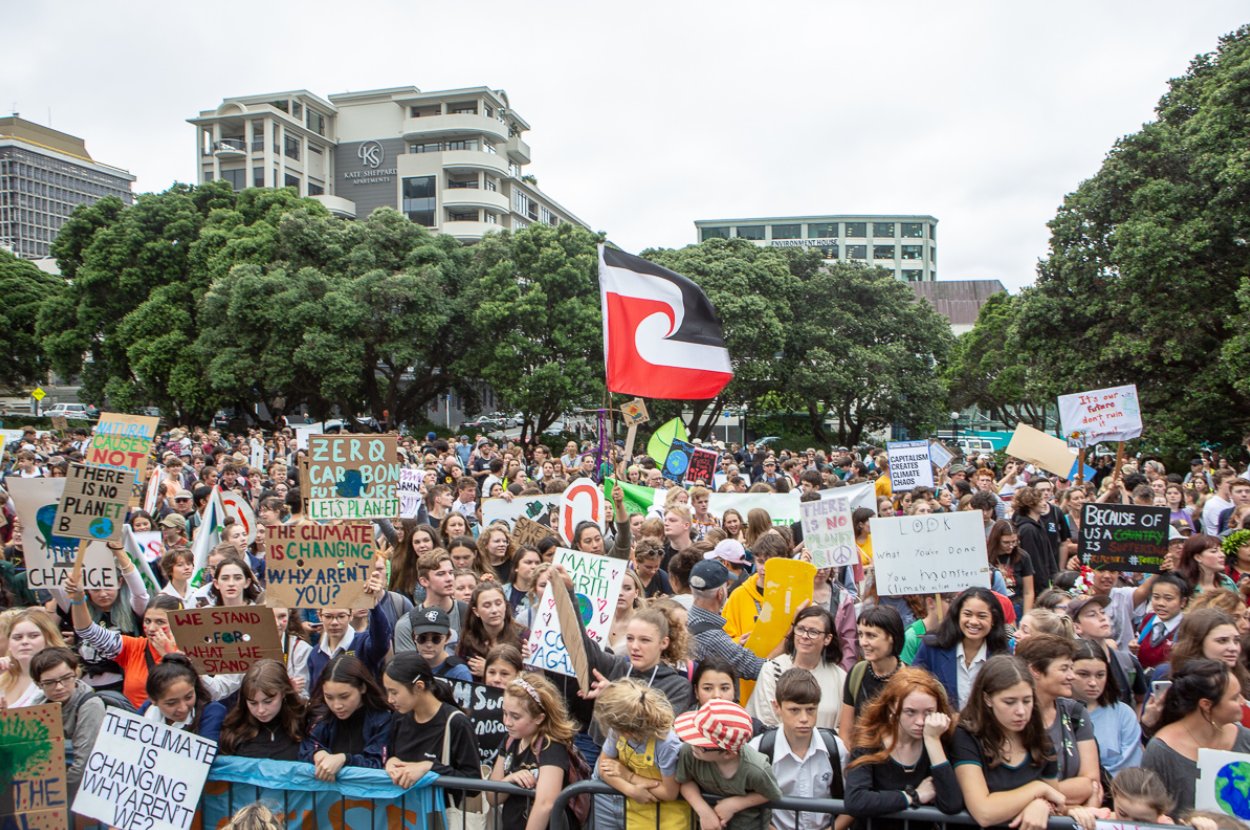
School strike for climate in Wellington on 15 March 2019. https://handwiki.org/wiki/index.php?curid=1444554
-
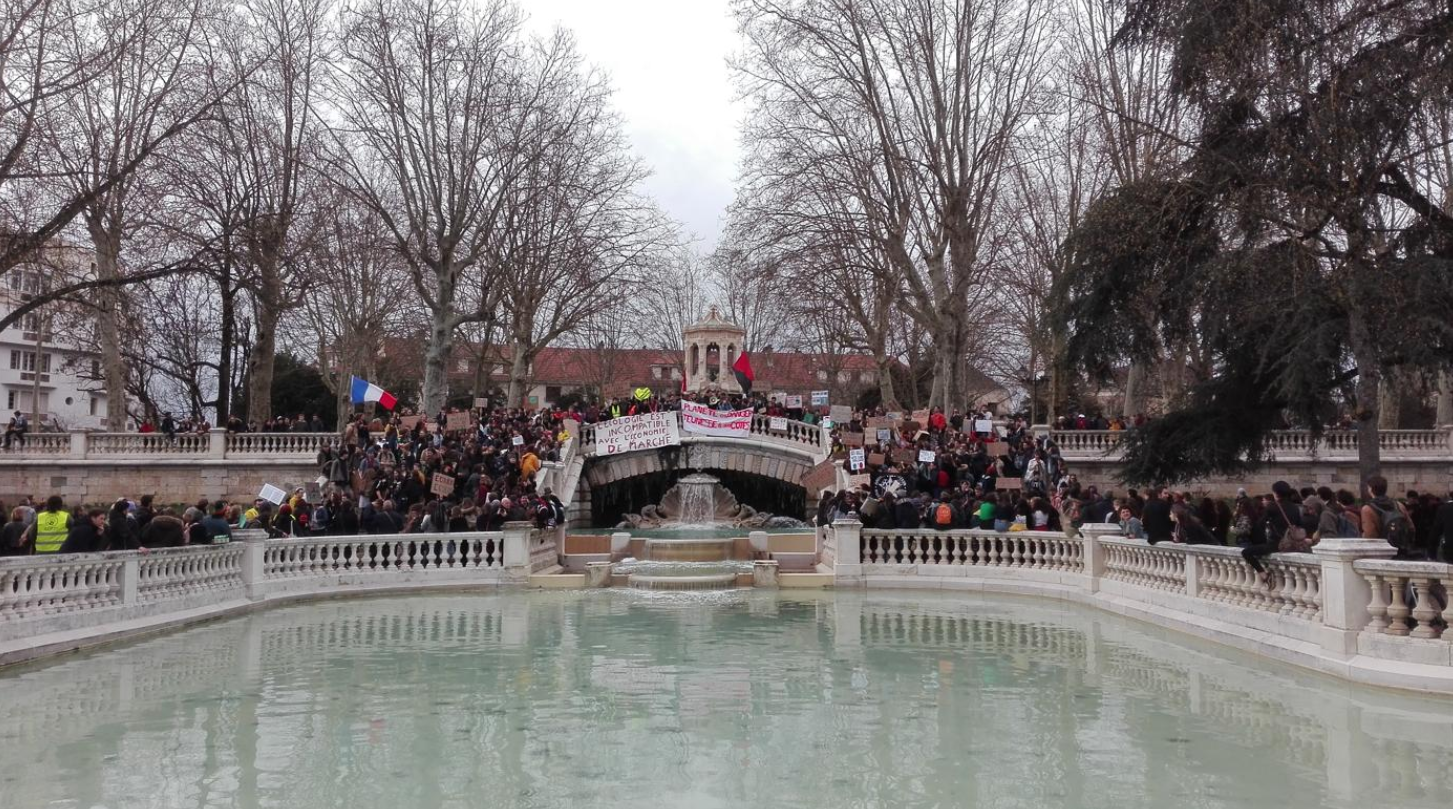
A speech being delivered from the stairs of the Jardin Darcy, in Dijon (Côte-d'Or, Burgundy, France ) for the global climate strike on 15 March 2019. https://handwiki.org/wiki/index.php?curid=1202778
3.2. Second Global Climate Strike on 24 May 2019

A second wave of global climate strikes began with actions in New Zealand and Australia on 24 May 2019.[50][51] Hundreds of thousands of school students around the world struck in more than 1600 towns in at least 125 countries.[52] Thunberg, one of the organizers, said that the strike took place on the second day of the four-day 2019 European Parliament election in order to affect it.[53] Polls conducted at the time show that climate change was an important issue for voters in the election—the most important issue for German voters.[53]
3.3. International Climate Strike in Aachen on 21 June 2019
Fridays for Future Deutschland called for a major climate strike under the motto "Climate justice without borders – United for a future" also inviting people from 17 countries to come to Aachen on 21 June 2019. Protesters gathered at several points all over the city (including at Aachen main station, Westpark, RWTH CARL (RWTH)|CARL (de) and Vaals) representing different chapters of the movement.[54] Accompanied by several musical groups, they then walked or drove with bicycles through the streets to the main event at the Tivoli, thereby blocking larger parts of the traffic infrastructure for hours. Some protesters occupied a house, a bridge and several poles to raise large posters. A number of 10000 to 20000 people was anticipated. According to the organizers, with eventually 40000 protesters this peaceful event turned out to be the largest single FFF climate strike in a German city that far.[55][56][57][58][59][60][61] The police acknowledged the originally anticipated numbers.[62][63] Among the many speakers were Cyril Dion (France),[59] Karen Raymond (India), Tetet Nera-Lauron (Philippines) and Jesse (Netherlands), Milan Schwarze and Sina Chom (Ende Gelände),[59] as well as activists from the Hambach Forest, Pacific Climate Warriors,[59] Alle Dörfer bleiben! (English: All villages stay!) and All In for Climate Action. Artists participating in the event included Brass Riot, Culcha Candela,[60] Bodo Wartke (de), Moop Mama (de), Ruslana Lyschytschko,[54] KingzCorner,[64] Leo Holldack and Davide Martello. Among the protesters were Rezo and Anton Hofreiter.
In parallel to this event, a group of Ende Gelände 2019 activists started protests at the nearby Garzweiler II open-pit lignite mine, blocking various mining infrastructure over the weekend.[65][66][67] FFFD had recently declared its solidarity with this movement, stating that under the circumstances civil disobedience would be a legitimate form of protest to save the future, but, organizing another demonstration on 22 June 2019 in Hochneukirch/Jüchen in the direct neighborhood of the open-pit mine,[68] that Fridays for Future would remain on the legal side.[69][70]
On 19 June 2019, shortly before the events, the city of Aachen had followed several other German cities and declared a "climate emergency" state.[71]
3.4. International Conference in Lausanne on 5–9 August 2019
From 5 to 9 August 2019, the University of Lausanne hosted 450 young Europeans from the climate strike movement for the "SMILE for Future" conference ("Summer Meeting in Lausanne Europe").[72][73] On 9 August 2019, the conference ended with a demonstration and the publication of the "Lausanne Climate Declaration" stating the values, objectives and measures proposed by the movements' participants in Lausanne.[73][74]
3.5. Global Week of Climate Action - 20-27 September 2019
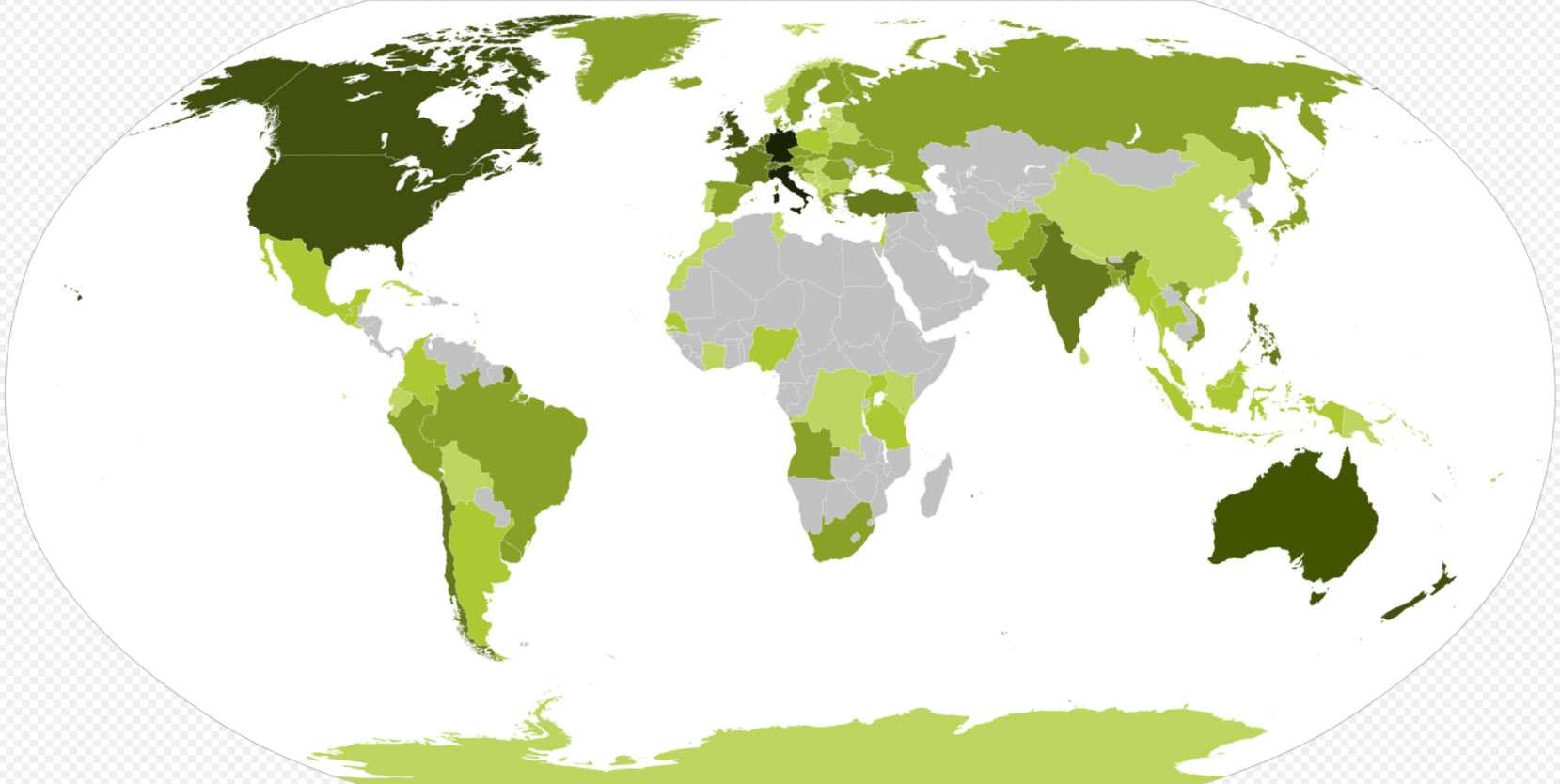
Advocated by the grassroots movement Earth Strike, the Global Week for Future was a series of strikes and events from 20–27 September 2019, primarily focused on the two Fridays 20 and 27 September. Timed to occur around the UN Climate Action Summit on 23 September,[75] the protests were planned in 4500 locations across 150 countries.[76][77]
Organizers of 20 September protests reported that over 4 million people participated in strikes worldwide,[78] including 1.4 million participants in Germany and 300000 protesters in Australia.[79][80] 27 September protests had a turnout of over 2 million people worldwide, including 1 million people in Italy and several hundred thousand people in Canada.[81][82][83]
3.6. Fourth Global Climate Strike on 29 November 2019
On 29 November 2019, three days before the start of the United Nations Climate Change Conference (COP25) in Madrid, demonstrations took place in 2,400 cities across 157 countries to protest government inaction on the climate crisis.[84][85] The organizers estimated the number of participants at 2 million,[86] including about 630000 people in Germany.[87]
4. Scientific Background
It is accepted by the vast majority of scientists that the greenhouse effect which warms Earth is much increased by emission of vast amounts of carbon dioxide and some other gases by human activities.[88] In the historical past the greenhouse effect, driven by volcanic and microbial carbon dioxide emission, prevented the earth from being permanently encased in ice, but since humanity industrialised, atmospheric carbon dioxide has increased and is causing ever more harmful global warming and climate change. The only processes that take carbon dioxide out of the atmosphere (once takeup by acidifying the oceans is saturated) are geological—locking up of carbon by weathering and formation of rocks as carbonates and other compounds, on a timescale of hundreds of thousands of years[89]—and botanical, uptake of carbon by vegetation, locking it up unless the vegetation burns or rots without being replaced, on a timescale of, at best, centuries.
Adults in positions of authority, in the form of fossil fuel corporations and global governments, are seen as being responsible for large carbon dioxide emissions, and doing far too little to reduce them.[90] A 2019 statement by over 12000 scientists says that "Young people’s concerns are justified and supported by the best available science".[91]
4.1. Support from Scientists
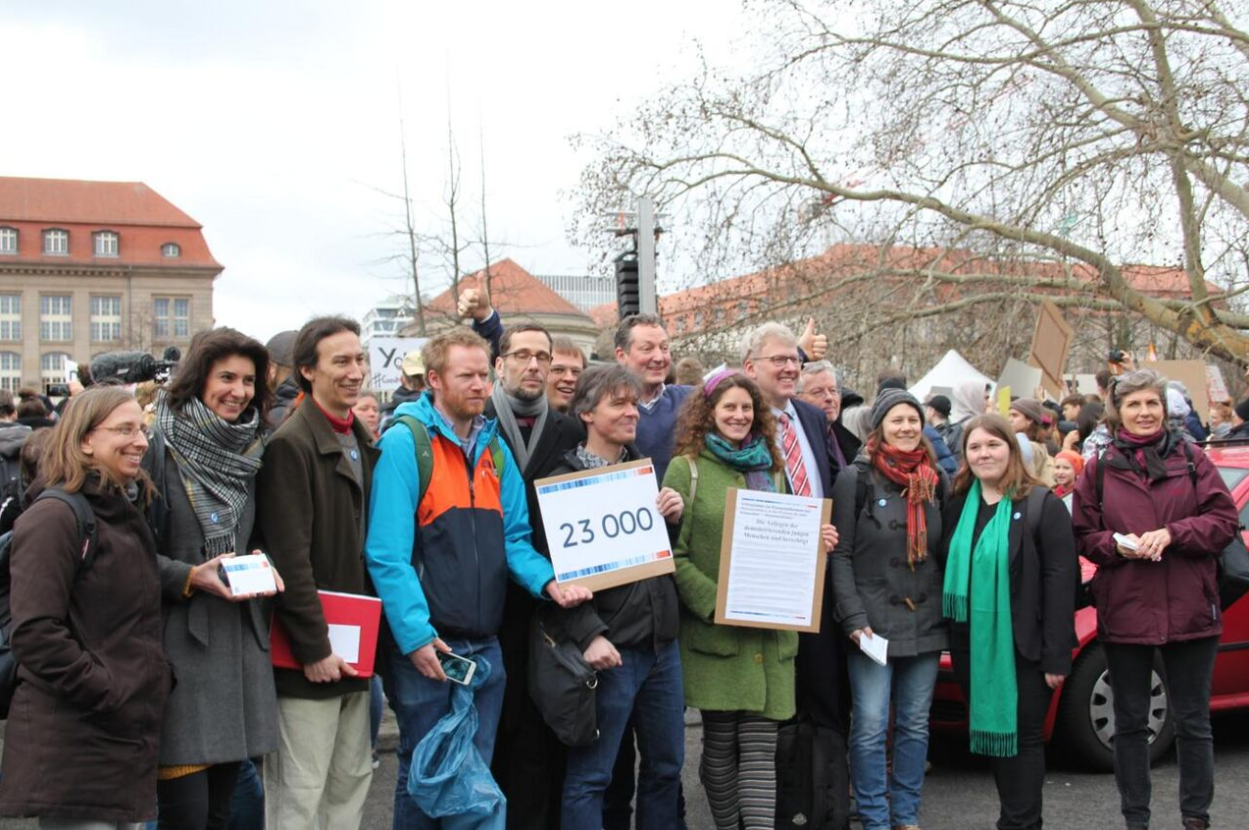
On 31 January 2019, more than 3400 Belgian scientists and academics signed an open letter in support of the school strikes.[92] The letter reads "On the basis of the facts supplied by climate science, the campaigners are right. That is why we, as scientists, support them."[93] This was followed by an open letter in support of the school strikes in the Netherlands, signed by 340 scientists,[94] and by 1200 researchers in Finland signing a letter, on 11 March 2019, supporting the strikes.[95] An article published in Nature in March 2019 listed many other expressions of support, and no criticisms, from scientists, with comments such as "The idea of a climate strike is innovative. It’s provocative, and I think it’s the right form of non-violent civil disobedience".[91]
In Germany, Austria, and Switzerland a group of scientists founded Scientists for Future (S4F) in support of the factual correctness of the claims formulated by the movement.[96][97][98][99] The statement was signed by over 26000 German-language scientists and scholars.[100]
On 14 March 2019, the Club of Rome issued an official statement in support of Thunberg and the strikes, urging governments across the world to respond to this call for action and cut global carbon emissions.[101]
In early April 2019, a letter titled "Concerns of young protesters are justified" was published in Science. The letter declared that the climate strikers' concerns are "justified and supported by the best available science" and was signed by over 3000 scientists worldwide.[102]
In June 2019, 1000 healthcare professionals in the UK and elsewhere, including professors, eminent public health figures, and former presidents of royal colleges, called for widespread non-violent civil disobedience in response to "woefully inadequate" government policies on the unfolding ecological emergency. They called on politicians and the news media to face the facts of the unfolding ecological emergency and take action. They supported the school strike movement and Extinction Rebellion.[103]
5. Reactions by Schools, Politicians, and Parents
The strikes have been both praised and criticised by adults in positions of authority. In the European Union, the movement enjoyed significant support by the pan-European party Volt Europa which, according to a report by Parents for Future before the European Elections 2019, shared all demands published by Fridays For Future in April 2019.[104]
Conservative politicians in the United Kingdom and Australia have described the strikes as truancy; some children have been punished or arrested for striking or demonstrating.[105][106] UK Prime Minister Theresa May criticised the strikes as wasting lesson and teaching time.[107] Jeremy Corbyn, leader of the Labour Party and Leader of the Opposition, voiced his support for the strikes,[108][109] as did leaders of other UK parties.[110] UK energy minister Claire Perry said that she would have joined the strikes in her younger days.[111] David Reed, director of charity Generation Change, pointed out that "the school leaders seem to have missed the point of efforts over the past decade to raise education standards. For what does excellence in education look like if it’s not pupils being engaged enough on issues such as climate change to do something about them?"[112]
Prime Minister of Australia Scott Morrison called for "more learning and less activism" following the strikes.[113] Australia's Education Minister Dan Tehan said that if school students think that issues are important, they should take action after school or on weekends.[114]
In New Zealand, there was mixed response from politicians, community leaders, and schools. Students were threatened to be marked as truant by some principals for attending the strike without their parents' or school's permission.[115] Judith Collins, and several other Members of Parliament were dismissive of the impact of the strike,[116] while Climate Change Minister James Shaw expressed support noting that little attention would be paid to marchers protesting on the weekend.[117][118]
On 15 March 2019 the UN General Secretary António Guterres embraced the strikers, admitting that "My generation has failed to respond properly to the dramatic challenge of climate change. This is deeply felt by young people. No wonder they are angry." Guterres invited world leaders to a UN summit in September 2019 with "concrete realistic plans to enhance their nationally determined contributions by 2020".[119]
Many parents, including public figures, have supported the children's climate strikes.[120] A spokesperson for the "Our Kids’ Climate" organization says that "an adult’s presence can help keep strikers safe," and "suggests bringing a sign that will resonate with other parents, for example a sign that says “I’m a concerned mom.”[121] The Moms Clean Air Force recommends contacting school officials, providing snacks for the children, and standing with signs in solidarity.[122]
The Elders Climate Action organization has created T-shirts which feature a grandparent hand in hand with a child, and seeks to mobilize "grandparents, great aunts and great uncles ... while there is still time to protect the well-being of our grandchildren.[123]
Showing a trend of new environment-related dictionary terms, "climate strike" was named Collins Dictionary’s 2019 word of the year.[124] Collins lexicographers had noticed a hundredfold increase in the use of the term in 2019, the largest of any word on their list.[124]
6. Awards
On 7 June 2019, Fridays for Future and Greta Thunberg were honoured with Amnesty International's Ambassador of Conscience award. Secretary General Kumi Naidoo said:
"We are humbled and inspired by the determination with which youth activists across the world are challenging us all to confront the realities of the climate crisis. Every young person taking part in Fridays for Future embodies what it means to act on your conscience. They remind us that we are more powerful than we know and that we all have a role to play in protecting human rights against climate catastrophe."[125]
References
- "Climate Strike 2015: Students Skip School demanding Climate Actions". Climate Strike. YouTube. 1 March 2016. https://www.youtube.com/watch?v=0GjdVgGfcb8.
- "Climate Strike". https://www.climatestrike.net/.
- "How teenage girls defied skeptics to build a new climate movement". CNN. 13 February 2019. https://edition.cnn.com/2019/02/13/uk/student-climate-strike-girls-gbr-scli-intl/index.html.
- "The Swedish 15-year-old who's cutting class to fight the climate crisis". The Guardian (London, United Kingdom). 1 September 2018. https://www.theguardian.com/science/2018/sep/01/swedish-15-year-old-cutting-class-to-fight-the-climate-crisis.
- "Teen activist on climate change: If we don't do anything right now, we're screwed". CNN. 23 December 2018. https://www.youtube.com/watch?v=rGmBkIUwYkA.
- "The Guardian view on teenage activists: protesters not puppets – Editorial". The Guardian. 7 February 2019. https://www.theguardian.com/commentisfree/2019/feb/07/the-guardian-view-on-teenage-activists-look-whos-pulling-the-strings.
- "The Fifteen-Year-Old Climate Activist Who Is Demanding a New Kind of Politics". 2 October 2018. https://www.newyorker.com/news/our-columnists/the-fifteen-year-old-climate-activist-who-is-demanding-a-new-kind-of-politics.
- "'Our leaders are like children,' school strike founder tells climate summit". The Guardian. 4 December 2018. https://www.theguardian.com/environment/2018/dec/04/leaders-like-children-school-strike-founder-greta-thunberg-tells-un-climate-summit.
- Tara Law. "Climate Activist Greta Thunberg Arrives in New York After Sailing Across the Atlantic". TIME. (28 August 2019). https://time.com/5663534/greta-thunberg-arrives-sail-atlantic/
- "Australian school children defy prime minister with climate strike". CNN. 30 November 2018. https://edition-m.cnn.com/2018/11/30/australia/australia-school-climate-strike-scli-intl/index.html.
- "FridaysforFuture Vienna". https://www.flickr.com/photos/168763685@N07/albums.
- "Metro Vancouver students cut class to demand action on climate change". CBC News. 7 December 2018. https://www.cbc.ca/news/canada/british-columbia/metro-vancouver-students-cut-class-to-demand-action-on-climate-change-1.4936647.
- "More than 1,000 Swiss pupils strike over climate". Swissinfo. 21 December 2018. https://www.swissinfo.ch/eng/global-warming_more-than-1-000-swiss-pupils-strike-over-climate/44636034.
- "La "grève du climat" rassemble des centaines d'étudiants alémaniques" (in fr). RTS Info. 22 December 2018. https://www.rts.ch/info/regions/autres-cantons/10091787-la-greve-du-climat-rassemble-des-centaines-d-etudiants-alemaniques.html. "["Climate strike" brings together hundreds of German-speaking students]"
- "Klimatmanifestation över hela landet: "Ödesfråga"" (in sv). Expressen. 30 November 2018. https://www.expressen.se/nyheter/klimat/klimatmanifestation-over-hela-landet-odesfraga/.
- ""I'm Sure Dinosaurs Thought They Had Time, Too": Over 12,000 Students Strike in Brussels Demanding Bold Climate Action". Common Dreams. 17 January 2010. https://www.commondreams.org/news/2019/01/17/im-sure-dinosaurs-thought-they-had-time-too-over-12000-students-strike-brussels.
- "En Suisse, l'heure de l'urgence climatique a sonné" (in fr). Le Temps. 18 January 2019. https://www.letemps.ch/suisse/suisse-lheure-lurgence-climatique-sonne. "Ce mouvement d’ampleur nationale a vu 22 000 gymnasiens, apprentis et étudiants crier à l’urgence climatique dans les rues de Lausanne, Fribourg ou Saint-Gall au lieu d’aller en classe. [This nationwide movement saw 22000 high-schoolers, apprentices and students shouting at the climatic emergency in the streets of Lausanne, Fribourg or St. Gallen instead of going to class.]"
- "Les jeunes se sont mobilisés pour le climat un peu partout en Suisse" (in fr). Radio Télévision Suisse. 18 January 2019. https://www.rts.ch/info/suisse/10148834-des-milliers-d-etudiants-suisses-se-mobilisent-contre-l-inaction-climatique.html. "En tout, une quinzaine de villes participent à cette action. [In all, about fifteen cities participate in this action.]"
- "Schüler streiken für Klimaschutz: "It's our fucking future"" (in de). Mitteldeutscher Rundfunk (MDR). 18 January 2019. https://www.mdr.de/sachsen-anhalt/halle/halle/schueler-streiken-fuer-klimaschutz-fridays-for-future-100.html. "Am Freitag haben Kinder und Jugendliche in mehr als 50 Städten in ganz Deutschland protestiert. Etwa 25.000 junge Menschen sind nach Angaben von Fridays for Future bundesweit auf die Straßen gegangen. Halle war die einzige Stadt in Sachsen-Anhalt, die sich an der Demo beteiligt hat."
- "Ragna, Linus, Ronja und Florian: Sie schwänzen den Unterricht, um die Welt zu retten" (in de). Stern. 30 January 2019. https://www.stern.de/politik/deutschland/freitag-zur-demo--so-denken-die-jugendlichen-von--fridays-for-future--8555674.html.
- "The grown-ups have failed miserably on climate change". The Independent. 14 February 2019. https://www.independent.co.uk/voices/climate-change-protest-strike-global-warming-children-greta-thunberg-a8779221.html.
- "Make the World Greta Again". New Federalist. 2019. https://www.thenewfederalist.eu/make-the-world-greta-again-11247. Retrieved 17 June 2019.
- "Belgian minister resigns over school-strike conspiracy claims". The Guardian (London, United Kingdom). 5 February 2019. ISSN 0261-3077. https://www.theguardian.com/world/2019/feb/05/belgian-environment-minister-joke-schauvliege-claimed-children-climate-protests-a-set-up.
- "School climate strike children's brave stand has our support". The Guardian. 13 February 2019. https://www.theguardian.com/environment/2019/feb/13/school-climate-strike-childrens-brave-stand-has-our-support.
- "Academics back UK schools' climate change strikes". The Guardian. 13 February 2019. https://www.theguardian.com/environment/2019/feb/13/academics-back-uk-schools-climate-change-strikes.
- "UK pupils to join global strike over climate change crisis". The Guardian. 8 February 2019. https://www.theguardian.com/environment/2019/feb/08/global-school-strikes-over-climate-change-head-to-the-uk.
- "Schoolchildren go on strike over climate change". BBC News. 15 February 2019. https://www.bbc.com/news/amp/uk-47250424.
- "#FridaysForFuture — Schüler kämpfen für Klimaschutz" (in de). KlimaLounge. 15 February 2019. https://scilogs.spektrum.de/klimalounge/fridaysforfuture-schueler-kaempfen-fuer-klimaschutz/. "Ich war von den Potsdamer Schülern eingeladen worden, auf der heutigen Demonstration vor dem Landtag ein paar Worte zu sagen. Diese Einladung habe ich gerne angenommen. [I had been invited by the Potsdam school pupils to say a few words at the demonstration today in front of the [Brandenburg] state parliament. I gladly accepted this invitation.]"
- "Swedish student leader wins EU pledge to spend billions on climate". Reuters. 21 February 2019. https://www.reuters.com/article/us-climatechange-teen-activist-idUSKCN1QA1RF.
- "700 Wissenschaftler und Prominente unterstützen Klimastreik". Der Tagesspiegel (Berlin, Germany). 5 March 2019. https://www.tagesspiegel.de/wirtschaft/scientists-for-future-700-wissenschaftler-und-prominente-unterstuetzen-klimastreik/24065788.html. "[Solidarity with student demonstrations: hundreds of researchers believe the protests are justified. In a petition they call for a quick change in climate policy.]"
- "Unterschriften". https://www.scientists4future.org/unterschriften/.
- "Team". https://www.scientists4future.org/team/.
- "Anuna ontmoet in Roemenië Macron en Michel: "Europees continent moet tegen 2050 klimaatneutraal worden"" (in nl). Het Laatste Nieuws. 9 May 2019. https://www.hln.be/wetenschap-planeet/milieu/anuna-ontmoet-in-roemenie-macron-en-michel-europees-continent-moet-tegen-2050-klimaatneutraal-worden~a8c3d338/.
- "Offener Brief von Greta und 16.000 Schülern: "Liebe EU-Staatchefs, wir fühlen uns verraten!"" (in de). Stern. 9 May 2019. https://www.stern.de/neon/wilde-welt/politik/-fridays-for-future---offener-brief-an-eu-staatschefs-beim-gipfel-in-sibiu-8702302.html.
- D'Amico, Fortunato (9 May 2019). "Clima, non solo Greta: un'altra attivista tedesca incontra 9 capi di governo e li esorta ad agire" (in it). Meteo Web. http://www.meteoweb.eu/2019/05/clima-non-solo-greta-attivista-tedesca-incontra-9-capi-governo-esorta-agire/1259741/.
- "School climate strikes: 1.4 million people took part, say campaigners". 19 March 2019. https://www.theguardian.com/environment/2019/mar/19/school-climate-strikes-more-than-1-million-took-part-say-campaigners-greta-thunberg.
- "Climate strikes held around the world – as it happened". The Guardian. 15 March 2019. ISSN 0261-3077. https://www.theguardian.com/environment/live/2019/mar/15/climate-strikes-2019-live-latest-climate-change-global-warming.
- "Students walk out in global climate strike". BBC. 24 May 2019. https://www.bbc.co.uk/news/world-48392551.
- "Photos: kids in 123 countries went on strike to protect the climate". 15 March 2019. https://www.vox.com/energy-and-environment/2019/3/15/18267156/youth-climate-strike-march-15-photos.
- Global coordination group of the youth-led climate strike (1 March 2019). "Climate crisis and a betrayed generation". The Guardian. https://www.theguardian.com/environment/2019/mar/01/youth-climate-change-strikers-open-letter-to-world-leaders.
- "Thousands of Scottish students to be allowed to miss school to join climate protests". 11 March 2019. https://thehill.com/policy/energy-environment/433571-thousands-of-scottish-students-to-be-allowed-to-miss-school-to-join.
- "Osa nuorista pelkää, uskaltaako perjantain ilmastolakkoon osallistua koulun asenteen takia: Näin rehtorit yrittävät suitsia lakkoilijoita". https://yle.fi/uutiset/3-10685882.
- "Turun koulutoimenjohtaja: "Ilmastolakko lapsen perustuslaillinen oikeus, ei voida kieltää"". 14 March 2019. https://www.ts.fi/uutiset/paikalliset/4513209/Turun+koulutoimenjohtaja+Ilmastolakko+lapsen+perustuslaillinen+oikeus+ei+voida+kieltaa.
- "Think we should be at school? Today's climate strike is the biggest lesson of all". The Guardian. 15 March 2019. https://www.theguardian.com/commentisfree/2019/mar/15/school-climate-strike-greta-thunberg?CMP=Share_iOSApp_Other.
- "300.000 bei "Fridays for Future" in Deutschland" (in de). Klimareporter. 15 March 2019. https://www.klimareporter.de/protest/300-000-bei-fridays-for-future.
- "Klima-Demos – von Berlin bis Sydney" (in de). Tagesschau. ARD. 15 March 2019. https://www.tagesschau.de/inland/klimaschutz-demonstrationen-fridays-for-future-103.html. "#Fridaysforfuture mobilisierte auch in Deutschland Hunderttausende Menschen. Bundesweit waren 220 Proteste angekündigt, an denen sich laut Veranstaltern rund 300.000 Menschen beteiligten. Die meisten Teilnehmer gab es bei der Demonstration in Berlin, wobei die Angaben über die Teilnehmerzahl schwanken. Die Polizei zählte bis zu 20.000 Menschen, die bei dem Zug mitliefen. In München kamen nach Behördenangaben rund 10.000 Teilnehmer zusammen, 6000 versammelten sich in Frankfurt am Main. Auch in anderen Städten wie Köln, Bremen, Hannover und Nürnberg wurde protestiert. [#Fridaysforfuture also mobilised hundreds of thousands of people in Germany. Nationwide 220 protests were announced, in which, according to organisers, about 300000 people participated. Most participants were at the demonstration in Berlin, for which the information on the number of participants varies. The police counted up to 20000 people walking along the march. In Munich, according to authorities, about 10000 participants came together, 6000 gathered in Frankfurt am Main. Protests also happened in other cities such as Cologne, Bremen, Hanover and Nuremberg.]" "Klima-Demos – von Berlin bis Sydney" (in de). Tagesschau. ARD. 15 March 2019. https://www.tagesschau.de/inland/klimaschutz-demonstrationen-fridays-for-future-103.html. "#Fridaysforfuture mobilisierte auch in Deutschland Hunderttausende Menschen. Bundesweit waren 220 Proteste angekündigt, an denen sich laut Veranstaltern rund 300.000 Menschen beteiligten. Die meisten Teilnehmer gab es bei der Demonstration in Berlin, wobei die Angaben über die Teilnehmerzahl schwanken. Die Polizei zählte bis zu 20.000 Menschen, die bei dem Zug mitliefen. In München kamen nach Behördenangaben rund 10.000 Teilnehmer zusammen, 6000 versammelten sich in Frankfurt am Main. Auch in anderen Städten wie Köln, Bremen, Hannover und Nürnberg wurde protestiert. [#Fridaysforfuture also mobilised hundreds of thousands of people in Germany. Nationwide 220 protests were announced, in which, according to organisers, about 300000 people participated. Most participants were at the demonstration in Berlin, for which the information on the number of participants varies. The police counted up to 20000 people walking along the march. In Munich, according to authorities, about 10000 participants came together, 6000 gathered in Frankfurt am Main. Protests also happened in other cities such as Cologne, Bremen, Hanover and Nuremberg.]" [1]
- "These Photos of Kids Protesting Climate Change All Over the World Will Give You Hope for the Future". Mother Jones. 15 March 2019. https://www.motherjones.com/politics/2019/03/global-climate-change-youth-protests-photos/.
- "#FridaysForFuture Overwinterer at the Neumayer Station III in the #Antarctic support the #SchoolStrike4Climate #ScientistsForFuture". AWI Media. 15 March 2019. https://twitter.com/AWI_Media/status/1106537052944957440/photo/1.
- "Christchurch students striking for climate again" (in en). https://www.stuff.co.nz/environment/climate-news/112807302/christchurch-students-striking-for-climate-again.
- "Students walk out in global climate strike". BBC. 24 May 2019. https://www.bbc.co.uk/news/world-48392551.
- "'We're one, we're back': Pupils renew world climate action strike". www.aljazeera.com. 24 May 2019. https://www.aljazeera.com/news/2019/05/pupils-renew-climate-action-world-strike-190524051317704.html.
- "Global Climate Strike: Record number of students walk out". 24 May 2019. https://www.cnn.com/2019/05/24/world/global-climate-strike-school-students-protest-climate-change-intl/index.html.
- Haynes, Suyin (24 May 2019). "Students From 1,600 Cities Just Walked Out of School to Protest Climate Change. It Could Be Greta Thunberg's Biggest Strike Yet". Time (magazine). http://time.com/5595365/global-climate-strikes-greta-thunberg/.
- Schayani, Isabel, ed (21 June 2019). "Aachen: Fridays for Future-Protest – Reportage und Interviews" (in de). Tagesschau. ARD. https://www.youtube.com/watch?v=8ErZBTLHDus.
- "Sie meinen es ernst" (in de). Zeit Online. 21 June 2019. https://www.zeit.de/gesellschaft/2019-06/fridays-for-future-klimaprostest-aachen-fs-3?uhttps://www.zeit.de/gesellschaft/2019-06/fridays-for-future-klimaprostest-aachen-fs-3.
- ""Fridays for Future"Zehntausende demonstrieren in Aachen für mehr Klimaschutz" (in de). Deutschlandfunk. 21 June 2019. https://www.deutschlandfunk.de/fridays-for-future-zehntausende-demonstrieren-in-aachen.1939.de.html?drn:news_id=1019749.
- "Germany: Aachen hosts 'Fridays for Future' climate rally". DW – Made for Minds. Deutsche Welle. 22 June 2019. https://www.dw.com/en/germany-aachen-hosts-fridays-for-future-climate-rally/a-49291173. "Germany: Aachen hosts 'Fridays for Future' climate rally". DW – Made for Minds. Deutsche Welle. 22 June 2019. https://www.dw.com/en/germany-aachen-hosts-fridays-for-future-climate-rally/a-49291173. [2]
- "Fridays for Future – Aachen 21 Juni 2019". Aachen, Germany. 21 June 2019. https://www.youtube.com/watch?v=xuKbwMzAiK0. [45:35 min]
- "Fridays For Future in AACHEN – FFF Klimastreik 21.06.2019 Fridaysforfuture" (in de). Ukulele Einhorn. Aachen, Germany. 21 June 2019. https://www.youtube.com/watch?v=HqkHR_Uub2w. [29:37 min]
- Der Pilger (21 June 2019). "Fridays for Future Demo Aachen 21.6.19" (in de). Aachen, Germany. https://www.youtube.com/watch?v=qkxJSo-chVM. [2:39:25 min]
- Except for the "Wald retten - Kohle stoppen!" (English: "Save the forest - Stop coal!") demonstration on 6 October 2018 at the Hambach Forest, which drew some 50000 people, but was more focused on stopping lignite mining and saving the forest rather than preventing climate change in general.
- jkl/dpa (21 June 2019). "Klimaschutz-Protest in Aachen – Tausende Schüler bei erster internationaler "Fridays for Future"-Demo – In Aachen ist die bisher größte zentrale Fridays-For-Future-Demonstration gestartet. Zehntausende Teilnehmer aus mehreren europäischen Ländern gingen auf die Straße." (in de). Spiegel Online. https://www.spiegel.de/lebenundlernen/schule/fridays-for-future-tausende-schueler-demonstrieren-in-aachen-fuer-klimaschutz-a-1273651.html.
- ""Fridays for Future" in Aachen: Liveblog zur Großdemo am Tivoli" (in de). 21 June 2019. https://www.aachener-zeitung.de/nrw-region/liveblog-zur-fridays-for-future-grossdemonstration-in-aachen-am-tivoli_aid-39521959.
- "KingzCorner News". Aachen, Germany: KingzCorner e.V.. 25 June 2019. https://aachenevents.com/location/location.php?id=56.
- ""Ende Gelände" besetzt Tagebau Garzweiler – Polizisten bei Sturm verletzt – Bei den Demos im Rheinischen Revier haben Aktivisten von "Ende Gelände" den Tagebau gestürmt. Mindestens zwei Polizisten wurden wohl verletzt." (in de). 22 June 2019. https://www.morgenpost.de/politik/article226242653/Aktivisten-von-Ende-Gelaende-besetzen-Tagebau-Garzweiler-Polizisten-bei-Sturm-verletzt.html.
- "Ende Gelände legt Rheinisches Revier still – Tagebau Garzweiler blockiert, Hambach Bahn sowie Nord-Süd Bahn besetzt" (in de). Leipziger Internet Zeitung. 22 June 2019. https://www.l-iz.de/melder/wortmelder/2019/06/Tagebau-Garzweiler-blockiert-Hambach-Bahn-sowie-Nord-Sued-Bahn-besetzt-281943.
- "Kohlebahn seit 15 Stunden blockiert: 6.000 Aktivist*innen in Aktion" (in de). Leipziger Internet Zeitung. 22 June 2019. https://www.l-iz.de/melder/wortmelder/2019/06/Kohlebahn-seit-15-Stunden-blockiert-6-000-Aktivistinnen-in-Aktion-281916.
- dpa (22 June 2019). ""Fridays For Future" sammelt sich zum Protest am Tagebau" (in de). Barknanger Kreiszeitung. Jüchen. https://www.bkz.de/nachrichten/fridays-for-future-sammelt-sich-zum-protest-am-tagebau-28394.html.
- "Der lange Zug von Aachen" (in de). Frankfurter Allgemeine Zeitung (FAZ). 21 June 2019. https://www.faz.net/1.6247808. "„Wir erachten zivilen Ungehorsam als legitime Protestform. Er ist zwingend notwendig zum Schutz unserer Zukunft.“ […] „Fridays for Future wird auf der legalen Seite bleiben.“"
- ""Fridays for Future": Internationaler Klimastreik in Aachen – "Fridays for Future" in Aachen "Oma, was ist ein Schneemann?"" (in de). Tagesschau. ARD. 21 June 2019. https://www.tagesschau.de/inland/fridaysforfuture-aachen-103.html.
- ""Klimanotstand" – Aachen folgt weiteren deutschen Städten" (in de). Deutschlandfunk. 19 June 2019. https://www.deutschlandfunk.de/klimanotstand-aachen-folgt-weiteren-deutschen-staedten.1939.de.html?drn:news_id=1019262.
- Official website of the "SMILE for Future" meeting (page visited on 9 August 2019). https://smileforfuture.eu
- "'SMILE for Future': Lausanne environment activists call for action on global warming" (in en). Swissinfo. 9 August 2019. https://www.swissinfo.ch/eng/summit-declaration_environment-activists-call-for-action-on-global-warming/45150342.
- "Lausanne Climate Declaration", SMILE for Future, 9 August 2019 (page visited on 2019-08-09). https://drive.google.com/file/d/1befzKdbd2F4vd5FRUuE7ZU92_nXnS0Fw/view
- "The World Is Burning, and Teens Are Fighting: What to Know About the Global Climate Strike" (in en-US). 17 September 2019. https://www.elle.com/culture/career-politics/a28985212/global-climate-strike-details-dates/.
- "US to stage its largest ever climate strike: 'Somebody must sound the alarm'". The Guardian. 20 September 2019. https://www.theguardian.com/world/2019/sep/20/climate-strikes-us-students-greta-thunberg.
- "The hard truths of climate change — by the numbers". Nature. 18 September 2019. https://www.nature.com/immersive/d41586-019-02711-4/index.html.
- "How big was the global climate strike? 4 million people, activists estimate.". Vox. https://www.vox.com/energy-and-environment/2019/9/20/20876143/climate-strike-2019-september-20-crowd-estimate.
- "Rekordzahlen bei Klimademos: In Deutschland demonstrieren 1,4 Millionen Menschen" (in de). https://www.zdf.de/uri/2e409846-e515-4055-a7df-140ca15c9f24.
- "'It's our future': Climate strike draws 'hundreds of thousands' to rallies across Australia demanding action" (in en-AU). 20 September 2019. https://www.abc.net.au/news/2019-09-20/school-strike-for-climate-draws-thousands-to-australian-rallies/11531612.
- Taylor, Matthew; Watts, Jonathan; Bartlett, John (27 September 2019). "Climate crisis: 6 million people join latest wave of global protests". The Guardian. https://www.theguardian.com/environment/2019/sep/27/climate-crisis-6-million-people-join-latest-wave-of-worldwide-protests. Retrieved 28 September 2019.
- "Fridays for future, al via i cortei in 180 città italiane: "Siamo più di un milione"". la Repubblica. 27 September 2019. https://www.repubblica.it/cronaca/2019/09/27/news/clima-237064333/?ref=RHPPLF-BH-I237047295-C8-P2-S1.8-T1. Retrieved 27 September 2019.
- Murphy, Jessica (27 September 2019). "Hundreds of thousands join Canada climate strikes". BBC. https://www.bbc.co.uk/news/world-us-canada-49856860. Retrieved 28 September 2019.
- "Climate change protests: Marches worldwide ahead of UN talks" (in en-GB). Deutsche Welle. 29 November 2019. https://www.dw.com/en/climate-change-protests-marches-worldwide-ahead-of-un-talks/a-51460018.
- Taylor, Matthew; Pidd, Helen; Murray, Jessica (29 November 2019). "Hundreds of thousands of students join global climate strikes" (in en-GB). The Guardian. ISSN 0261-3077. https://www.theguardian.com/environment/2019/nov/29/hundreds-of-thousands-of-students-join-global-climate-strikes.
- Carlisle, Madeleine (29 November 2019). "Millions Around The World Strike on Black Friday for Action on Climate Change". Times. https://time.com/5741593/black-friday-climate-strike/. Retrieved 3 December 2019.
- "Hunderttausende demonstrieren für das Klima" (in de). Zeit Online. 29 November 2019. https://www.zeit.de/gesellschaft/zeitgeschehen/2019-11/fridays-for-future-klimaprotest-demonstrationen-klimaschutz.
- "Joint Science Academies' Statement". 2005. http://nationalacademies.org/onpi/06072005.pdf.
- "How long do greenhouse gases stay in the air?". 16 January 2012. https://www.theguardian.com/environment/2012/jan/16/greenhouse-gases-remain-air.
- "Is Alexandria Ocasio-Cortez right to ask if the climate means we should have fewer children?". 27 February 2019. https://www.theguardian.com/environment/shortcuts/2019/feb/27/is-alexandria-ocasio-cortez-right-to-ask-if-the-climate-means-we-should-have-fewer-children.
- "Thousands of scientists are backing the kids striking for climate change". Nature 567 (7748): 291–292. 2019. doi:10.1038/d41586-019-00861-z. ISSN 0028-0836. https://dx.doi.org/10.1038%2Fd41586-019-00861-z
- Scientsts4Climate (31 January 2019). "Strengthen your climate ambitions!". https://scientists4climate.be/letter/english/.
- "Meer dan 3.400 wetenschappers zetten feiten op een rij in open brief: "Klimaatbetogers hebben groot gelijk"". vrtnws. 31 January 2019. https://www.vrt.be/vrtnws/nl/2019/01/30/3-300-belgische-wetenschappers-zetten-feiten-op-een-rijtje-in-op/.
- "350 scientists back Dutch school kids climate demonstration". DutchNews. 7 February 2019. https://www.dutchnews.nl/news/2019/02/350-scientists-back-dutch-school-kids-climate-demonstration/.
- "Yli 1200 tutkijaa tukee ilmastolakkoilevia nuoria: "Planeetan hyväksikäyttö on lastemme laiminlyöntiä"". https://yle.fi/uutiset/3-10683192.
- "Scientists4Future - Wissenschaftler unterstützen Schülerdemos für den Klimaschutz" (in de). Deutschlandfunk. 12 March 2019. https://www.deutschlandfunk.de/scientists4future-wissenschaftler-unterstuetzen.697.de.html?dram:article_id=443354.
- "12 000 Wissenschaftler stellen sich hinter die streikenden Schüler" (in de). 15 March 2019. https://scilogs.spektrum.de/klimalounge/12-000-wissenschaftler-stellen-sich-hinter-die-streikenden-schueler/. "Update 15.3.: wir haben noch bis gestern Abend weiter gesammelt – ein paar Tage mehr und jetzt haben schon mehr als 23 000 Forscher unterschrieben!"
- "Pressemitteilung für Deutschland der Initiative Scientists for Future" (in de). Berlin, Germany. 12 March 2019. https://www.scientists4future.org/wp-content/uploads/2019/05/S4F_PM_20190312_DE.pdf.
- dpa (15 March 2019). "Schüler in über 100 Staaten demonstrieren für mehr Klimaschutz" (in de). Frankfurter Allgemeine Zeitung (FAZ). https://www.faz.net/aktuell/politik/ausland/klimaschutz-schueler-in-ueber-100-staaten-demonstrieren-16090936.html.
- "The concerns of the young protesters are justified: A statement by Scientists for Future concerning the protests for more climate protection". GAIA – Ecological Perspectives for Science and Society (oekom verlag (de)) 28 (2): 79–87. 2019. doi:10.14512/gaia.28.2.3. https://www.oekom.de/fileadmin/zeitschriften/gaia_leseproben/GAIA_2019_02_079_087_SCIENTISTFORFUTURE.pdf. Retrieved 22 September 2019. (9 pages)
- "Statement in support of global student climate protests". Winterthur, Switzerland: Club of Rome. 14 March 2019. https://www.clubofrome.org/wp-content/uploads/2019/03/Statement-in-Support-of-Global-Student-Climate-Protests.pdf.
- "Concerns of young protesters are justified". Science 364 (6436): 139–140. 12 April 2019. doi:10.1126/science.aax3807. PMID 30975882. https://dx.doi.org/10.1126%2Fscience.aax3807
- Matthew Taylor (27 June 2019). "Doctors call for nonviolent direct action over climate crisis". https://www.theguardian.com/environment/2019/jun/27/doctors-call-for-nonviolent-direct-action-over-climate-crisis.
- Parents For Future Karlsruhe (15 August 2019). "Parents For Future: Antworten der Parteien" (in de). https://www.klimawahl-2019.eu/?page_id=149.
- Josh Barrie (21 June 2019). "Three schoolgirls have been banned from their end of year prom after going on a climate emergency march". https://inews.co.uk/news/uk/schoolgirls-banned-prom-attending-climate-emergency-protest/.
- Charlotte England (12 April 2019). "School Climate Strikes: Tens of Thousands of Children Skip Class in Third National Action". https://rightsinfo.org/school-climate-strikes-tens-of-thousands-of-children-skip-class-in-third-national-action/.
- "Theresa May criticises pupils missing school to protest over climate change". sky news. Sky UK. 15 February 2019. https://news.sky.com/story/theresa-may-criticises-pupils-missing-school-to-protest-over-climate-change-11638238.
- Corbyn, Jeremy [@jeremycorbyn] (15 February 2019). "Climate change is the greatest threat that we all face but it is the school kids of today whose futures are most on the line. They are right to feel let down by the generation before them and it’s inspiring to see them making their voice heard today.#SchoolStrike4Climate". https://twitter.com/jeremycorbyn/status/1096358314743685120.
- Corbyn, Jeremy [@jeremycorbyn] (12 April 2019). "I support the young people striking today and thank them for taking action. We urgently need to decarbonise the economy, invest in green jobs to rebuild our communities, and protect those most vulnerable to the impacts of climate change.". https://twitter.com/jeremycorbyn/status/1116710295467188229.
- Corbyn, Jeremy; Sturgeon, Nicola; Cable, Vince; Berry, Siân (15 March 2019). "Do UK politicians support the climate strike? Party leaders respond | Jeremy Corbyn and others" (in en-GB). The Guardian. ISSN 0261-3077. https://www.theguardian.com/commentisfree/2019/mar/15/uk-politicians-climate-change-party-youth-strikers.
- "Climate strike: Schoolchildren protest over climate change". 15 February 2019. https://www.bbc.co.uk/news/uk-47250424.
- "If children don't join the climate strike, their schools are underachieving". The Guardian. 14 March 2019. ISSN 0261-3077. https://www.theguardian.com/commentisfree/2019/mar/14/children-climate-strike-schools-activism-pupils.
- "Scott Morrison, student climate strike: PM calls for 'less activism in schools'". https://www.news.com.au/technology/environment/climate-change/why-scott-morrison-is-worse-than-tony-abbott/news-story/ac9c3a43a0097e668b5e4ab4406bcb4a.
- "'Worse than Voldemort': Global students' strike targets climate change". 15 March 2019. https://www.reuters.com/article/us-climate-change-youth-idUSKCN1QW01S.
- "Students who strike for climate change will be marked as truants, principals say". climate news. Stuff Limited. 7 March 2019. https://www.stuff.co.nz/environment/climate-news/111013724/students-who-strike-for-climate-change-will-be-marked-as-truants-principals-say.
- "'Not going to help the world one bit' Judith Collins says as MPs voice opinions about school students' climate change protest". TVNZ. https://www.tvnz.co.nz/one-news/new-zealand/not-going-help-world-one-bit-judith-collins-says-mps-voice-opinions-school-students-climate-change-protest.
- "Telling students whether to take part in climate change strike 'patronising', Shaw says". https://www.stuff.co.nz/national/politics/111149062/telling-students-whethTeher-to-take-part-in-climate-change-strike-patronising-shaw-says.
- "Student climate change strike: Rules don't matter when you're fighting for your future". https://www.stuff.co.nz/national/politics/opinion/111139469/student-climate-strikes-rules-dont-matter-when-youre-fighting-for-your-future.
- "The climate strikers should inspire us all to act at the next UN summit". The Guardian. 15 March 2019. https://www.theguardian.com/commentisfree/2019/mar/15/climate-strikers-urgency-un-summit-world-leaders.
- Damian Carrington (9 May 2019). "Parents to protest in support of children's climate strikes". https://www.theguardian.com/environment/2019/may/09/parents-to-protest-in-support-of-childrens-climate-strikes.
- ChavoBart Digital Media (2 December 2019). "Parents have a role to play in youth climate strikes, advocate says" (in en-US). https://www.yaleclimateconnections.org/2019/12/parents-have-a-role-to-play-in-youth-climate-strikes-advocate-says/.
- "How Parents Can Support the Youth Climate Strike" (in en-US). 9 September 2019. https://www.momscleanairforce.org/parents-support-kids-climate-strike/.
- "About Us" (in en-US). https://www.eldersclimateaction.org/aboutus/.
- Hanson, Johanne Elster (6 November 2019). "'Climate strike' named 2019 word of the year by Collins Dictionary". The Guardian. Archived from the original on 16 November 2019. https://web.archive.org/web/20191116214118/https://www.theguardian.com/books/2019/nov/07/climate-strike-named-2019-word-of-the-year-by-collins-dictionary.
- "Climate activists Greta Thunberg and the Fridays for Future movement honored with top Amnesty International award" (in en-US). https://www.amnestyusa.org/press-releases/climate-activists-greta-thunberg-and-the-fridays-for-future-movement-honored-with-top-amnesty-international-award/.

